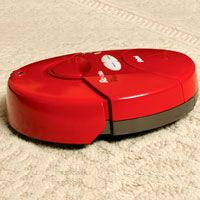The box sat on the rug in my library, amid the hardcovers, paperbacks and copies of The New York Times. The package was tall, much taller than I expected. Yet there it was, greeting me after a long day at work. The house was quiet. A cat trotted into the room and rubbed her furry cheeks against the crate. The dogs followed and sniffed wet sniffs.
With scissors carefully in hand, I clipped the packing tape. One snip. Two snips. Three, and then four. The tape fell to the carpet in a sticky tangle, much to the cat's delight. Plastic and cardboard sleeves shrouded the contents, which I gingerly lifted from the box. I ripped the plastic off and threw the sleeves helter-skelter. Oh my, wasn't it beautiful! My new Dyson vacuum cleaner was beautiful! I quickly assembled the machine, my hands shaking like a fumbling lover. The hose goes here, the nozzle there. I plugged it in. I fired it up.
Advertisement
The Dyson roared to life. I was smitten. I have had affairs with other vacuums cleaners before. Eventually, they lost their ability to satisfy. Off they went, in a cloud of dust to the garage, to the town dump, to the attic. I hoped the Dyson would be different. I was sure it would be. I had done my homework. Cyclonic separation! That was the ticket. None of the other vacuums I ever owned had such technology.
Cyclonic separation! It sounded like something out of an Isaac Asimov sci-fi novel. But this was science fact. Would the Dyson disappoint? Was cyclonic separation just a marketing gimmick? Would it work? And what in the name of Electrolux is cyclonic separation anyway?
Advertisement


